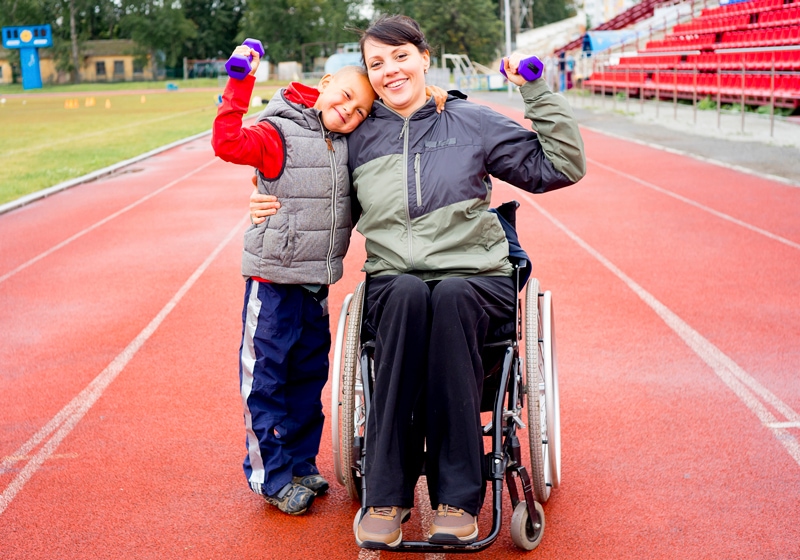
People with spinal cord injury are more likely than the general population to have health problems related to weight gain, changes in cholesterol, and high blood sugar. They are also at higher risk of cardiovascular disease. Not being active may contribute largely to these problems, according to the Spinal Cord Injury Model Systems Knowledge Translation Center.
That’s why people with SCI can benefit from regular physical activity and exercise.
With the proper health precautions and professional guidance, you can make great strides to improve your quality of life. Whether your goal is to lose weight or build strength and endurance, there are fitness programs available for all abilities and injury levels.
And here’s some extra incentive. Research has shown that exercise after SCI can improve breathing ability, circulation, and muscle strength and prevent secondary conditions such as pressure ulcer, UTIs, and respiratory infections.
How to Get Started
First things first. Begin by performing a personal assessment of your goals in starting an exercise program and potential resources to help you get results.
For instance, what exercises are you comfortable performing at your current fitness level? Do you have health issues that could interfere with your progress? If you’re uncomfortable performing certain exercises or unsure where to begin, it may be beneficial to consult a personal trainer, physical therapist, or clinical exercise physiologist for more guidance. This will help you avoid injury and ensure the exercises and fitness equipment are tailored to fit your needs.
Whatever exercise program you choose, it should include stretching, aerobic exercise, and strength-training.
Exercise doesn’t have to be a chore, make it fun! But it can’t be stressed enough, ask your primary care physician before starting any new exercise program. Depending on your injury level, there are a few serious side effects to look out for, including temperature, heartrate, and blood pressure irregularities; excessive spasticity; skin breakdown; and joint strain.
Always stop exercising if you experience pain, discomfort, nausea, dizziness, lightheadedness, chest pain, irregular heartbeat, shortness of breath or clammy hands.
The Right Routine for You
Exercise should include stretching, aerobic exercise, and strength training. The Centers for Disease Control and Prevention (CDC) recommends three exercise options for adults:
- 150 minutes of moderate-intensity aerobic exercise every week and strength training 2 or more days per week. Strength training should focus on all possible major muscle groups.
OR - 75 minutes of vigorous-intensity aerobic exercise every week and strength training 2 or more days per week, to work all possible major muscle groups.
OR - An equal mix of moderate- and vigorous-intensity aerobic exercise and strength training 2 or more days per week, to work all possible major muscle groups.
For more information, consult CDC’s Physical Activity Guidelines at http://www.cdc.gov/physicalactivity/everyone/guidelines/.
Exercise isn’t strictly a gym activity. It can be done anywhere at any time, whether you’re at home or wheeling around town. There are endless possibilities, from yoga, circuit training and handcycling to weightlifting and using exercise bands.
If you do a little bit of homework, plan carefully and consult the right professionals, you’ll be on your way to a new and improved you.
Check out these additional resources:
How-to exercise videos–Rehabilitation Research and Training Center (RRTC) on Secondary Conditions in the Rehabilitation of Individual with Spinal Cord Injury
Fitness Equipment for Wheelchair Users–United Spinal Association
Exercise After Spinal Cord Injury–Spinal Cord Injury Model Systems Knowledge Translation Center
Finding an Accessible Fitness Center–Northwest Regional Spinal Cord Injury System
Exercise Recommendations and Considerations for Persons with Spinal Cord Injury– Archives of Physical Medicine and Rehabilitation
